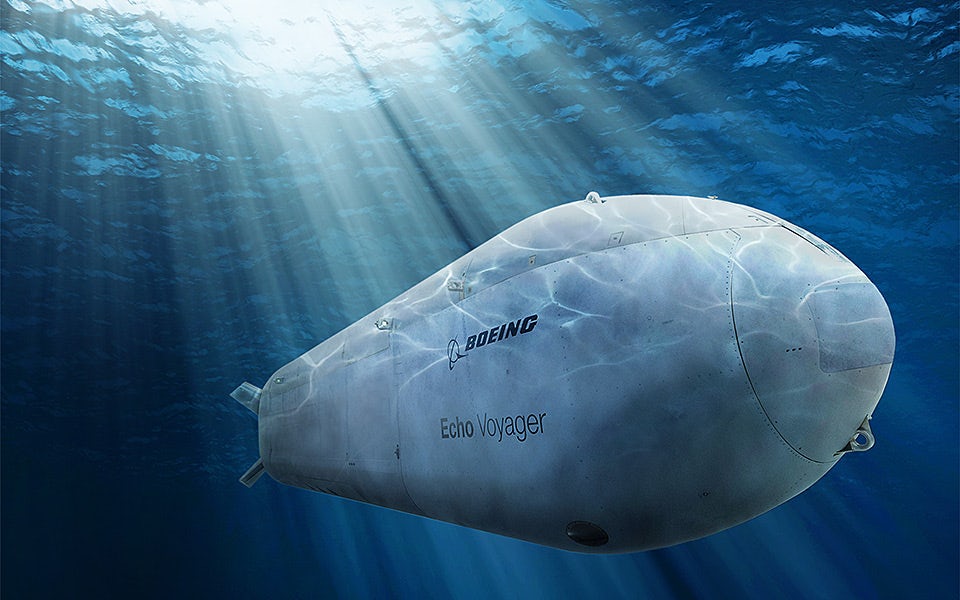The Navy has awarded Boeing Co. a $43 million contract to build four 51’ unmanned submarines, capable of ocean-crossing autonomous navigation for military missions.
The Orca Extra Large Unmanned Undersea Vehicles (XLUUVs) will be based on Boeing’s Echo Voyager, an autonomous diesel-electric submarine that has demonstrated a top speed of 9 knots and capability to dive to 11,000’ depth.
The naval version will have a 34’ payload bay with a 2,000 sq. foot volume, and the Navy envisions using it for stealthy missions including mine laying and mine detection and sweeping. It is a major step forward in the Navy’s drive to acquire autonomous vessels, which started with relatively modest missions such as unmanned surveillance and security boats.
Autonomous underwater vehicles (AUVs) have come a long way since Rutgers University scientists in 2009 achieved the first trans-Atlantic crossing by a Slocum electric underwater glider, now a common tool for oceanographers. The Orca sub design is more like a compact version of the diesel-electric boats operated by navies, without need for support ships and with a range up to 6,500 miles.

Boeing has been testing the Echo Voyage off the coast of California. Boeing photo.
Boeing will partner with shipbuilder Huntington Ingalls Industries to build the subs. Boeing has been testing the Echo Voyager off the California coast since 2017.
The design will be “modular in construction with the core vehicle providing guidance and control, navigation, autonomy, situational awareness, core communications, power distribution, energy and power, propulsion and maneuvering, and mission sensors,” according to a Feb. 13 contracting notice from the Department of Defense.
“The Orca XLUUV will have well-defined interfaces for the potential of implementing cost-effective upgrades in future increments to leverage advances in technology and respond to threat changes.”
Like crewed diesel-electric submarines, the Orca will need to run on its diesel at the surface to charge batteries for navigating underwater. But with no need for life support systems on board, the sub could be capable of operating independently at sea for as long as six months.





